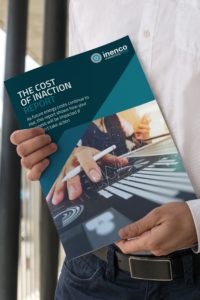 UK organisations need to take action to reduce their non-commodity costs, says Inenco in this sponsored post.
UK organisations need to take action to reduce their non-commodity costs, says Inenco in this sponsored post.
While wholesale energy costs are affected by many unpredictable factors, making it difficult to forecast whether they will go up or down, it is far more certain that non-commodity costs will rise. In 2017/2018 alone, various levies, including the Renewables Obligation (RO) Levy and the Climate Change Levy (CCL), coupled with carbon floor costs, will add around £41/MWh (4.1p/KWh) to an energy bill*.
Furthermore, Inenco has calculated that UK organisations combined can expect to have paid an extra £7.42 billion on their energy costs by 2019 if they don’t take action to manage their consumption.
The good news is that non-commodity cost rises can be mitigated through the use of energy management strategies. To help organisations choose an appropriate course of action, Inenco investigated the impact of continuing along the same path (inaction) versus implementing a range of measures:
1) Reduce overall consumption by 10 per cent
2) Shift 20 per cent of consumption from Red bands and distribute across Amber bands
3) Shift 50 per cent of consumption from Red bands and distribute across Amber bands
4) Implement an energy efficiency programme (aiming for a five per cent reduction year-on-year).
Inenco calculated the energy costs rises that typical organisations – including a large retail park, a small retail store, a manufacturing site and an inner-city university – would face over a three-year period (2017-2019) if they kept the same energy strategy or applied these scenarios.
In all cases, shifting 50 per cent of consumption from Red bands and distributing across Amber bands, or implementing an energy efficiency programme, had the most impact compared to inaction, keeping energy costs rises as low as two to four per cent in the case of a small retail store1, and three to four per cent in the case of an inner-city university2. Combining the scenarios (as far as possible) would obviously maximise the savings.
Inenco’s research demonstrates that businesses cannot afford to stand still and carry on as before. The first step should be to review current energy use and projected energy costs, and to consider how much internal resource is available. The second step may require engagement with external consultants to determine which solutions are most appropriate.
Inenco’s Cost of Inaction report can be downloaded at www.inenco.com/the-cost-of-inaction. For further information, please visit www.inenco.com.
*Excluding businesses in energy intensive industries
1Based on a small retail store in North Wales or Merseyside, 1GWh annual consumption, LV in CRC
2Based on a university in the North East (Leeds or York), 3GWh annual consumption, LV in CRC
Related stories:
Inenco: Firms must invest in energy managers to meet UK carbon targets
Inenco: Supplier billing errors ‘cost UK firms half a billion pounds’
Click here to see if you qualify for a free subscription to the print magazine, or to renew.
Follow us at @EnergystMedia. For regular bulletins, sign up for the free newsletter.



